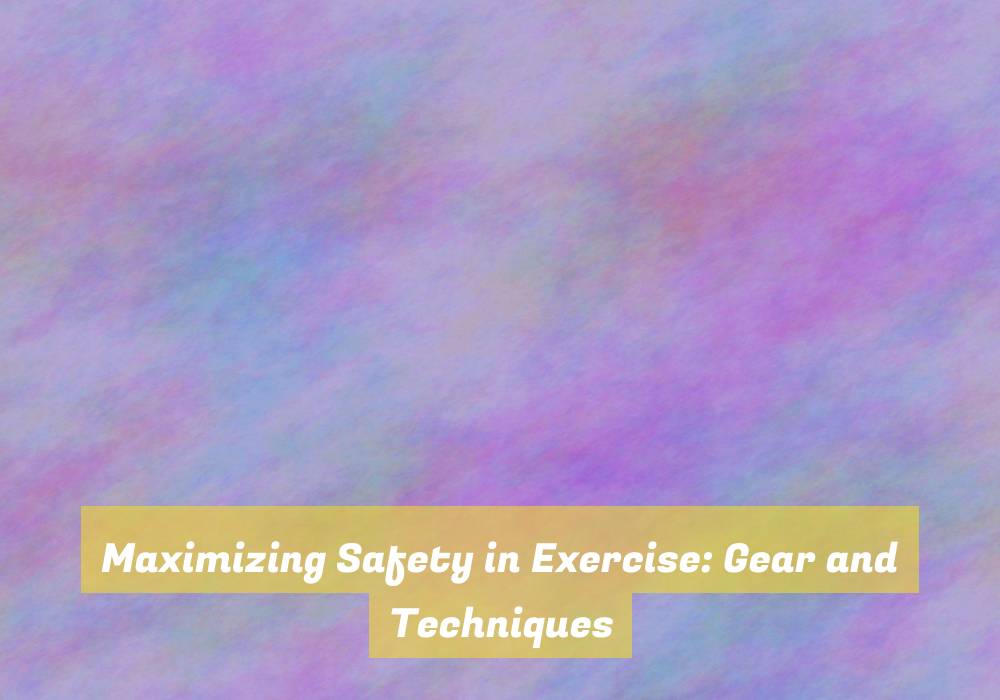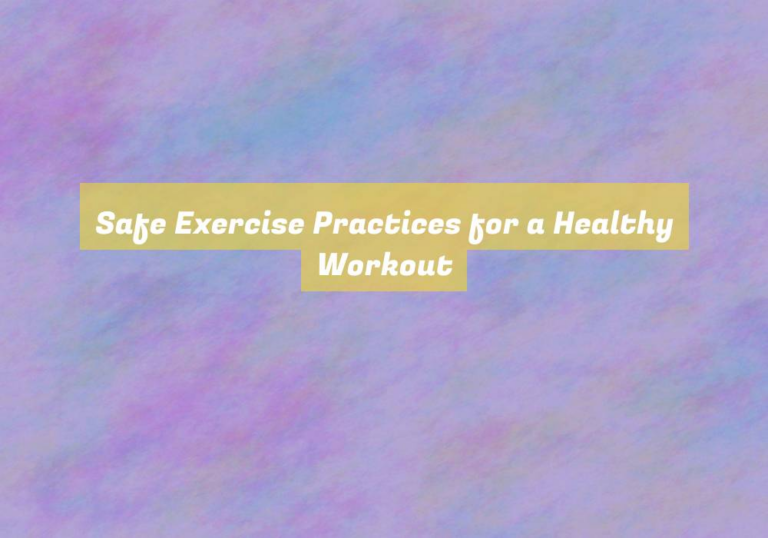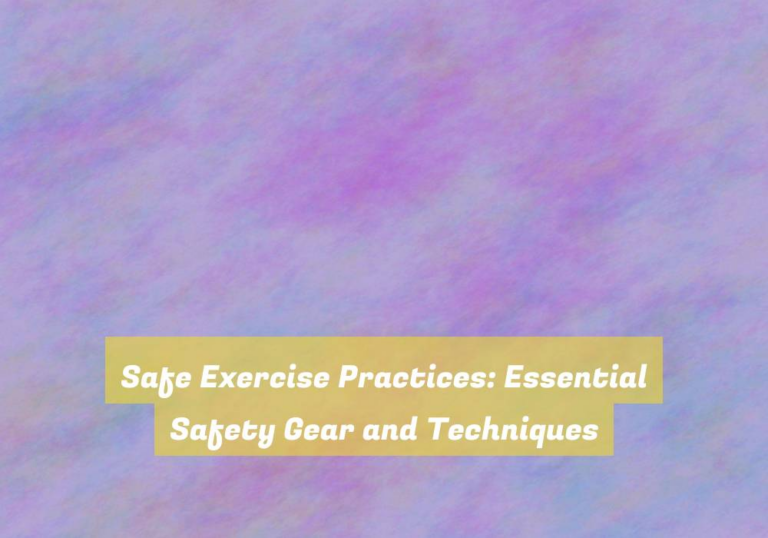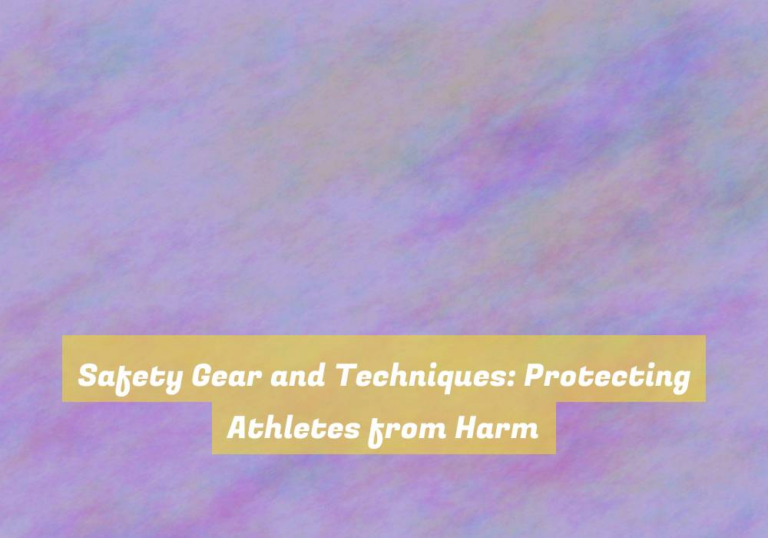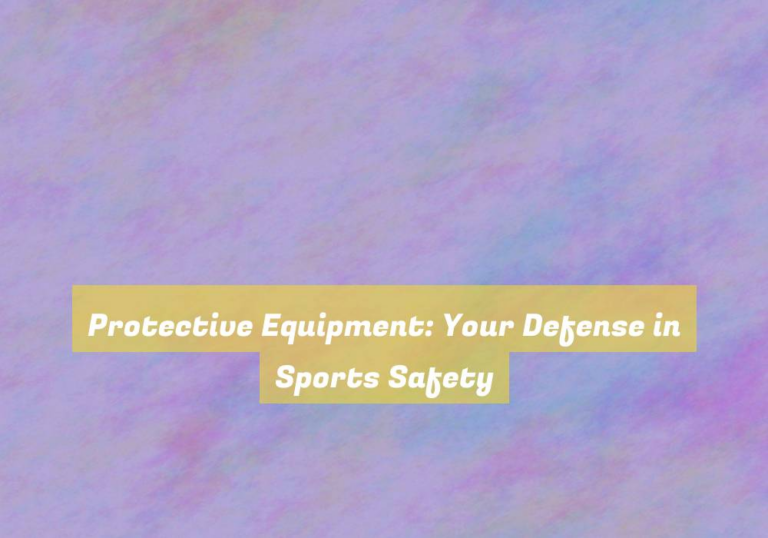Maximizing Safety in Exercise: Gear and Techniques
When it comes to exercise, think of your gear as your armor against potential harm. Proper equipment and techniques are crucial for ensuring your safety during physical activity.
But what exactly constitutes the right gear and techniques? How can you be sure youG??re maximizing safety in your exercise routine?
YouG??ll discover the answers to these questions and more as we explore the essential components of exercising safely.
Importance of Proper Gear
To ensure your safety and maximize the benefits of your workout, wearing the appropriate gear is essential. Proper gear not only provides protection but also enhances your performance. When engaging in physical activities such as running, cycling, or weightlifting, the right gear can make a significant difference.
For example, wearing supportive and well-fitted athletic shoes can help prevent injuries and provide stability during exercises. Additionally, moisture-wicking clothing helps to keep your body dry and comfortable, reducing the risk of chafing and irritation.
In activities like cycling, using a helmet is non-negotiable. ItG??s a crucial piece of safety gear that can prevent head injuries in the event of a fall or collision. Similarly, when lifting weights, gloves can offer better grip and protect your hands from calluses and blisters.
Moreover, for activities in low-light conditions, wearing reflective gear significantly increases your visibility to others, reducing the risk of accidents.
Essential Safety Techniques
Using proper form and technique during exercise is essential for preventing injuries and maximizing the effectiveness of your workout. One essential safety technique is to always warm up before starting your exercise routine. Warming up helps increase blood flow to your muscles and prepares your body for more intense physical activity, reducing the risk of strains and sprains.
Additionally, maintaining proper posture and alignment throughout your workout is crucial. Whether youG??re lifting weights, running, or practicing yoga, paying attention to your bodyG??s alignment can prevent unnecessary stress on your joints and muscles.
Another important technique is to listen to your body. If something doesnG??t feel right, donG??t push through the pain. Stop and assess the situation to prevent exacerbating a potential injury.
Lastly, always incorporate rest and recovery into your exercise routine. Your body needs time to repair and rebuild, so make sure to schedule rest days and prioritize sleep.
Choosing the Right Footwear
When selecting footwear for exercise, itG??s crucial to prioritize comfort, support, and functionality over fashion trends. The right footwear can significantly impact your performance and reduce the risk of injury. Look for shoes that provide ample cushioning to absorb impact and reduce stress on your joints.
Additionally, ensure that the shoes offer good arch support to maintain proper alignment and stability during various movements.
Consider the specific type of exercise youG??ll be engaging in when choosing footwear. For example, running shoes are designed to support forward motion and absorb shock, while cross-training shoes offer lateral support for activities like weightlifting and aerobics. Likewise, hiking boots provide ankle support and traction for outdoor treks.
ItG??s important to try on different pairs and walk around in them to assess comfort and fit. Your footwear should feel secure and snug without being too tight. Remember that your feet may swell during exercise, so itG??s best to try on shoes later in the day when your feet are slightly larger.
Injury Prevention Strategies
Prioritize injury prevention by ensuring your footwear provides adequate support and cushioning for your chosen exercise activities. Proper footwear is crucial in preventing common exercise-related injuries such as sprains, strains, and stress fractures.
Additionally, itG??s essential to incorporate dynamic warm-up and cool-down routines into your workout regimen. These routines help prepare your muscles and joints for activity and aid in preventing injury.
Another important strategy is to gradually increase the intensity and duration of your workouts. Sudden spikes in activity level can put you at risk for overuse injuries.
Cross-training, or varying your exercise routine, can also help prevent overuse injuries by reducing the repetitive stress on specific muscles or joints.
Incorporating strength training exercises into your routine can further enhance injury prevention by improving muscle strength and joint stability.
Finally, listen to your body and pay attention to any signs of pain or discomfort. Ignoring these signals can lead to more serious injuries.
Conclusion
So, remember to always prioritize safety in your exercise routine.
Make sure you have the proper gear, practice essential safety techniques, and choose the right footwear to avoid any potential injuries.
By implementing injury prevention strategies, you can maximize safety in your workouts and enjoy the benefits of exercise without the risk of harm.
Stay safe and keep active!

